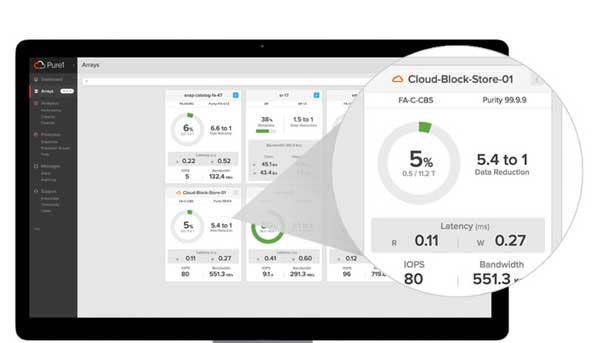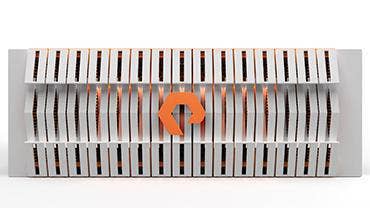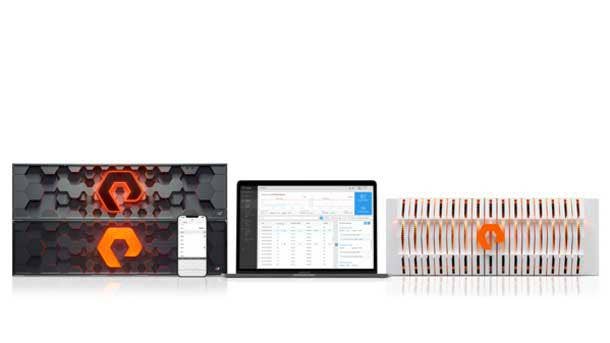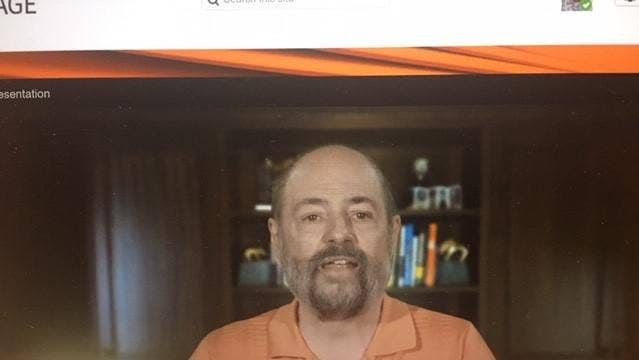Pure Storage CEO Charles Giancarlo On COVID, WFH, All-Flash Data Centers
“We already have some customers that have decided to go all-flash in their data centers. So they‘ve eliminated spinning disk from their centers. They may still go archive into a cloud or to tape, but they don’t want spinning disks in their data centers anymore,” says Charles Giancarlo, CEO of Pure Storage.

Pure Storage And CEO Giancarlo Stare Down COVID-19
All-flash storage technology developer Pure Storage on Tuesday reported its fiscal 2021 second quarter financials, with revenue up 2 percent year-over-year to $403.7 million, GAAP net loss down slightly to $65.0 million, and non-GAAP net income up considerably to $17.5 million.
CEO Charles Giancarlo told CRN in an exclusive meeting that the quarter‘s results were better than expected given the impact the COVID-19 pandemic has had on business and society for the past several months. One financial highlight was the growth of subscription services, which now account for about one-third of the company’s entire revenue, and is continuing to grow.
The pandemic also had other impacts for the company. Giancarlo himself experienced the coronavirus first-hand early in the pandemic when he was infected with it, but recovered. Pure Storage was forced to move its Pure Accelerate 2020 conference to a virtual format, a move which Giancarlo said actually lead to more interactions with clients and an increased sales pipeline compared to past physical conferences with only 10 percent of the cost. That, he said, has the company wondering whether to stick with virtual conferences going forward, or whether preferences for face-to-face relationships will win out.
For a look at these issues and more, turn the page to get caught up with Giancarlo and Pure Storage.

How did the COVID-19 coronavirus pandemic impact Pure Storage's second fiscal quarter results?
First [fiscal] quarter results were really very, very good, and well above expectations, given the crisis. But a lot of that was driven by accelerated investment caused by the virus, with customers not being fully ready with the additional web-based access needed for the work-from-home environment. So that helped us.
Q2 mainly had the effect of the economy overall, and also [some impact from] customers. So overall, we had very positive results, above expectations, with good operational discipline showing a profit for the quarter. We had real growth in our subscription services, and we did really good in international, which, of course, locked down earlier than the U.S. for the virus but also opened up earlier than the U.S. Overall, U.S. was slow and that slowed things down a bit. So, above analysts‘ expectations, but clearly now fully subjected to the effects of a slower economy.

You mentioned subscription services. Is that a significant part of Pure Storage's business yet?
Yeah, it‘s over a third of our business now.
Could you see a day where all Pure Storage's revenue comes from subscriptions as businesses move away from capex (capital expenses)?
I certainly see the majority of it going to subscriptions. But it‘s nothing to do with what we want, by the way. It’s that many customers have very low cost of capital, and they may prefer to buy it that way. And we want to make sure we offer our products and services and software to our customers the way they want to purchase them.
But you do expect it to grow as a percentage of your revenue over time?
Exactly.

Pure Storage in the past has talked about the all-flash data center. How do you see that idea progressing?
You saw the news about the FlashArray//C, right? We‘re now in its second generation, which is all-QLC. And it’s less expensive than when we introduced it about nine months ago. And now it’s less expensive than hybrid [flash and disk] arrays. It’s out-performing hybrid arrays. But remember it could be 10-times smaller capacity, 10-times lower power use, less waste, and overall easier to manage. [We’ll soon be competitive] with 7,200-rpm spinning disk. Then all workloads but deep archive, I think, will be all-flash. We already have some customers that have decided to go all-flash in their data centers. So they’ve eliminated spinning disk from their centers. They may still go archive into a cloud or to tape, but they don’t want spinning disks in their data centers anymore.
And are your channel partners ready for that?
I think so. They just want to make money. They already sell storage one way or the other. Remember, for them, [all-flash is] less work. Less maintenance. Fewer emergency calls about failures. It‘s all possible.

Back in March, you were infected with COVID-19. Going through that experience personally, has it affected how you look at the pandemic's effects on the population and on the IT industry?
Getting it personally and taking the time to read a lot about how COVID and previous pandemics like the 1918 Spanish Flu and the Russian Flu before that, yes, absolutely, it gave me a better perspective on how pandemics make their way across the world and what they do to economies as well as societies. I think that, experiencing it first hand, it is certainly the sickest I‘ve ever been. It was quite the experience, I’ll just put it that way. It certainly made me very thoughtful and probably, I wouldn’t say cautious, but want to manage this crisis for our company in an appropriate way.
Has Pure Storage done anything in the last couple months specifically to help mitigate the impact of COVID-19?
We were very early in sending our employees to work from home. We built up our infrastructure right away. We had a pretty solid supply chain, both pre-COVID and in the early days of COVID. We made sure we distributed our supply chain around the world. That was a very important thing. We didn‘t panic, but we made sure that our employees had the right PPE (personal protective equipment) early-on so that when they needed to come into work as essential workers they could [do so] with confidence. And when they needed to go to our customers, even more importantly, they felt confident in being able to do so.
We have built a lot of different support capabilities for our employees. In particular, we‘ve really invested in helping some of our supply partners get through this by providing them extra capital to put in safety equipment for their workers.
Having interfaced with many other CEOs in many other companies, I would find it hard to identify one single thing that we‘ve done that, let’s say, nobody else has done. But I would say, I do think we’ve been very comprehensive in our overall response.

One of the impacts of COVID has been a move away from face-to-face interactions, particularly conferences. Pure Storage held its Pure Accelerate conference virtually in June. How would you describe the difference in results between the live and the virtual conferences?
Other than the fact that I think people are social animals and want to go back to socializing, I‘ll tell you, the results are such that we would never go back to in-person. We had three-times the number of people effectively attend the conference. We had over twice as many customers overall attend the conference. [The sales] pipeline takes a while to build and to close, certainly. But at this point in time, our pipeline is about 40 percent larger than it was after last year’s physical Accelerate . And, of course, it was something along the lines of 10 percent of the cost. So you put all that together, it’s really a tremendous success.
Let me make sure I understand this. You're saying that Pure Storage in the future will not have a physical Accelerate conference, but instead will go virtual going forward. ...
Thank you for asking me again. I didn‘t quite say that. I’m saying that people do enjoy the social contacts. So we’ll have to see as we go forward.